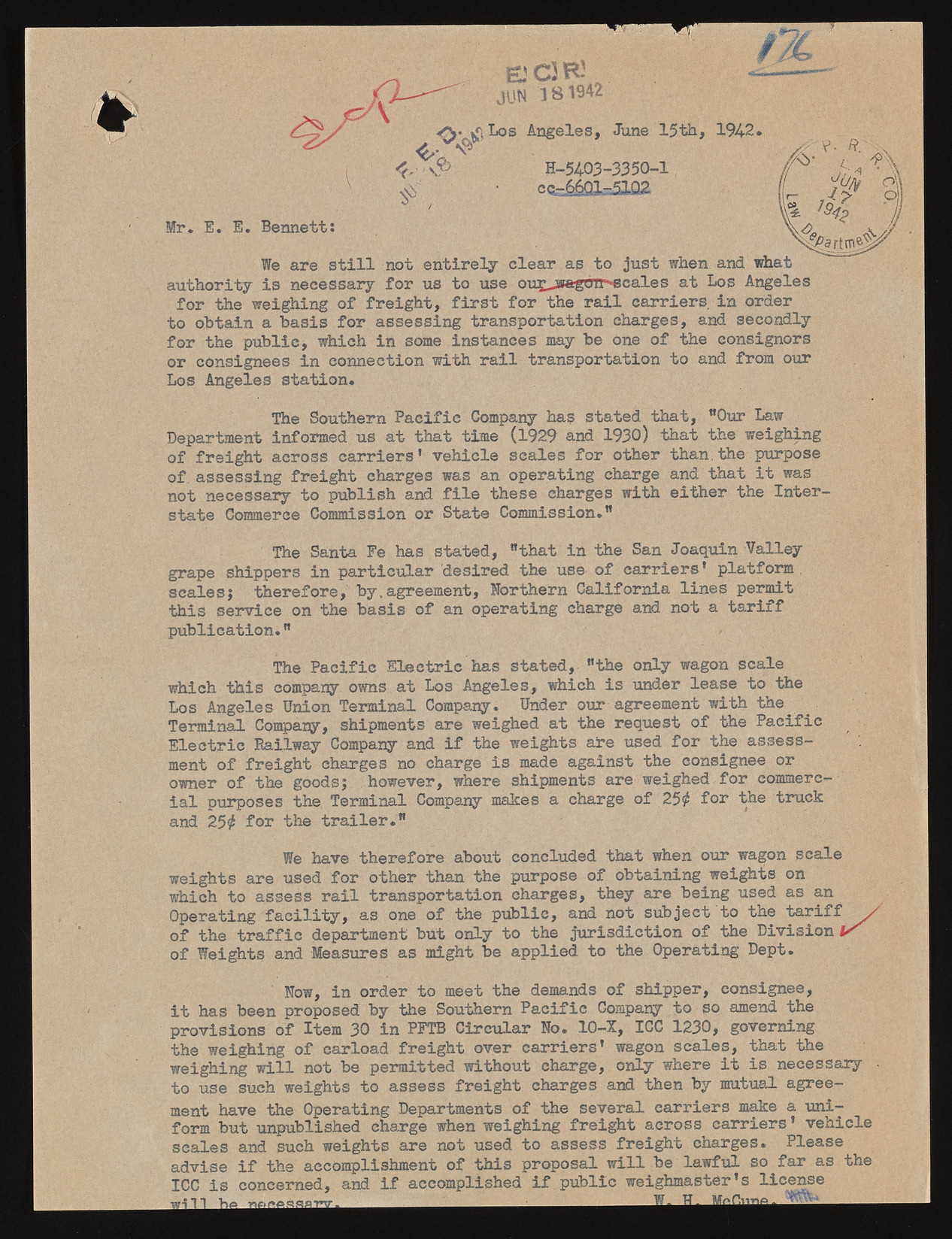Copyright & Fair-use Agreement
UNLV Special Collections provides copies of materials to facilitate private study, scholarship, or research. Material not in the public domain may be used according to fair use of copyrighted materials as defined by copyright law. Please cite us.
Please note that UNLV may not own the copyright to these materials and cannot provide permission to publish or distribute materials when UNLV is not the copyright holder. The user is solely responsible for determining the copyright status of materials and obtaining permission to use material from the copyright holder and for determining whether any permissions relating to any other rights are necessary for the intended use, and for obtaining all required permissions beyond that allowed by fair use.
Read more about our reproduction and use policy.
I agree.Information
Digital ID
Permalink
Details
Member of
More Info
Rights
Digital Provenance
Publisher
Transcription
A 9 I1 I. . V EJCJRV'. JUN 1819^2 y^.^, Los Angeles, June 15th, 194-2. 4 - ^ > N H-5403-3350-1 • cc-66Ql-.51Q2 I; S ’ . ?'.? - ? a >9. Mr. E. E. Bennett: m We are still not entirely clear as to just when and what authority is necessary for us to use ou£-j*agrrrr>ecales at Los Angeles for the weighing of freight, first for the rail carriers in order to obtain a basis for assessing transportation charges, and secondly for the public, which in some instances may be One of the consignors or consignees in connection with rail transportation to and from our Los Angeles station* The Southern Pacific Company has stated that, "Our Law Department informed us at that time (1929 and 1930) that the weighing of freight across carriers' vehicle scales for other than.the purpose of assessing freight charges was an operating charge and that it was not necessary to publish and file these charges with either the Interstate Commerce Commis s i o n or State Commission." The Santa Fe has stated, "that in the San Joaquin Valley grape shippers in particular desired the use of carriers * platform scales} therefore, by,agreement, Northern California lines permit this service on the basis of an operating charge and not a tariff publication." The Pacific Electric has stated, "the only wagon scale which this company owns at Los Angeles, which is under lease to the Los Angeles Union Terminal Company. Under our agreement with the Terminal Company, shipments are weighed at the request of the Pacific Electric Bailway Company and if the weights are used for the assessment of freight charges no charge is made against the consignee or owner of the goods} however, where shipments are weighed for commercial purposes the, Terminal C om p an y makes a charge of 25# for the truck and 25# for the trailer." We have therefore about concluded that when our wagon scale weights are used for other than the purpose of obtaining weights on which to assess rail transportation charges, they are being used as an Operating facility, as one of the public, and not subject to the tariff z' of the traffic department but only to the jurisdiction of the Division i s of Weights and Measures as might be applied to the Operating Dept. Now, in order to meet the demands of shipper, consignee, it has been proposed by the Southern Pacific Company to so amend the provisions of Item 30 in PFTB Circular No. 10-X, ICC 1230, governing the weighing of carload freight over carriers’ wagon scales, that the weighing will not be permitted without charge, only where it is necessary - to use such weights to assess freight charges and then by mutual agreement have the Operating Departments of the several carriers make a uniform but unpublished charge when weighing freight across carriers’ vehicle scales and such weights are not used to assess freight charges. Please advise if the accomplishment of this proposal will be lawful so far as the ICC Is concerned, and if accomplished if public weighmaster’s license

